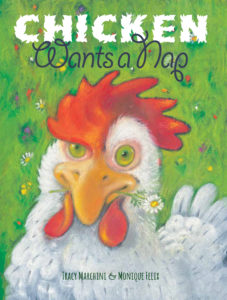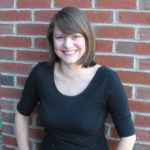
Nathan here! Back in my agenting days I had the pleasure of working with Tracy Marchini, who has since gone on to become an agent with BookEnds Literary and a published picture book author. I invited her to talk about what makes picture books stand out. Take it away, Tracy!
Whether I’m writing my own picture books, editing them for a client, or going through my query box, there are a few things that are (nearly) universal when it comes to picture books.
But first I want to start with a definition of the picture book. Because a “children’s book” could mean any number of things – but most of the time when people are just starting to write for children and use the term, they really mean picture book.
Picture book definition
In today’s market, a picture book is a thirty two (or occasionally twenty-four or forty) page, (usually) fully illustrated work with an audience from birth up to potentially twelve – but usually closer to seven or eight. A younger picture book is designed to be read to the child, and an older picture book is designed to be read by the child.
Today’s picture books are generally between 300 – 500 words (though can range anywhere from 100 to 800 for fiction and up to 1,200 for non-fiction.)
In theory, a child might go from board book, to picture book, to early reader or chapter book, to middle grade novel. (But of course, they’re probably reading or being read a variety of formats at any given time as their reading journey progresses.)
Picture book plots
Unlike a children’s storybook, which is a collection of short stories for children, a picture book focuses on one inciting incident or problem and has a distinct narrative arc.
A picture book’s arc leaves one or two pages for set up, one or two pages for resolution, and in between we generally see rising action driven by our protagonist.
So in my picture book, Chicken Wants A Nap, our set up is right there in the title – which in this case is also the first line. “Chicken wants a nap.” For this particular story, that’s all that’s needed to get Chicken on her way.
In the subsequent pages, Chicken tries to find the perfect spot for her nap, and the barnyard consistently acts as her foil. With every attempt, she learns something and moves to the next. Turning the page both moves the action forward and facilitates the humor as Chicken thinks she’s solved her problem, only to be foiled again when the page is turned. (I feel like you could write a series of blog posts on page turns alone.)
The resolution though, is just as compact as the set up. Chicken has found her perfect situation. And the line is “And Chicken naps.”
But – because we always want to leave the reader with a twist at the end – there’s one last line for one last page turn. A beat for additional humor and surprise. (Which I’m not going to ruin for you, as I hope you’ll read the book yourself!)
But ultimately, Chicken had a problem, and she solved it on her own.
Protagonists in picture books
This is important because picture books are meant to show a child that they have their own power, or agency. The protagonist is a stand in for our child reader (be the protagonist an actual child or – say – a chicken) and that’s why it’s so important in your picture books to make sure that the protagonist solves their own problem instead of having another character do it for them.
And while not all picture books follow this pattern, a good structure to internalize while you’re writing your first picture books is the “try three times and fail” method. Your character is introduced with a problem, they try three times to get what they want using a logical progression, and on the fourth try they’ve put together all they’ve learned and solved the problem themselves.
Today’s picture books generally don’t just have an external/physical problem. They commonly have an internal/emotional problem too that works hand in hand with the physical problem. So the character feels a certain way, and that’s why they go off on this physical journey. For instance, if they’re lonely, they might decide to host a giant party in order to make friends. If they’re feeling overshadowed by a new sibling, they might do a series of things to try and get their parents’ attention. But in a picture book, they solve the underlying emotional problem through the physical action. (Or sometimes vice versa.)
Picture book illustrations
Finally, illustrations in picture books do the heavy lifting when it comes to description and setting. They can add humor when the text and the illustration juxtapose each other. They can add mood by the use of bright and warm or muted and cool colors. Illustrations add movement – as long as there’s enough movement in the text itself. They can be drawn to draw a reader’s eye to one part of the page – and even to make the reader pause before turning to the next.
As a querying picture book writer, you don’t need (or want) to attach an illustrator to your project. The publisher will do that when they buy the book. But you do want to leave room for that future illustrator to work. And that means thinking about all the things above – rising action, page turns, potential for movement in the illustrations – as you write!

Tracy Marchini is a Literary Agent at BookEnds Literary, where she represents both debut and award-winning authors and illustrators of fiction and non-fiction for children and teens. To get a sense of what she’s looking for, you can follow her Twitter #MSWL, see her announced client books, and read her submission guidelines.
As an author, her debut picture book, Chicken Wants a Nap, was called “A surprising gem” in a starred review from Kirkus. She’s been accepted for publication in Highlights Magazine and has won grants from the Highlights Foundation, the Puffin Foundation and La Muse Writer’s Retreat in Southern France. She holds an M.F.A in Writing for Children and a B.A. in English, concentration in Rhetoric.



This is great information. Thank you! Also, are you hosting a Blog Bracket Challenge again this year?
Indeed! Post coming soon, but the group is Bransford Blog Challenge and the password is “rhetorical”
I just joined the bracket. Thank you! And thanks for the info on Ms. Marchini–I queried her. She seems awesome.